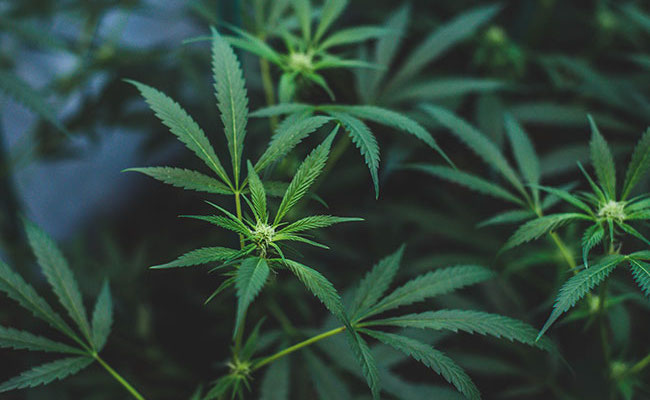
Updated Nutrient Ranges for Floral Hemp
Nutrient management is a delicate balance. Too much or too little of any one nutrient can derail a plant’s growth. The North Carolina Department of Agriculture (NCDA) has made it a little easier for growers with reference ranges for macro and micronutrients in floral hemp. The reference ranges were determined by analyzing tissue samples from throughout the state, but NCDA’s Kristin Hicks says the ranges may be applicable to most of the Southeast. Hicks is section chief at NCDA’s Plant, Waste, Solution and Media Analysis Lab.
“When industrial hemp became legal in North Carolina, I began working toward developing plant tissue target nutrient ranges that were specific to cannabis,” says Hicks. “The optimal or normal range of each macro and micronutrient is crop specific and these ranges had not been established for cannabis.”
The latest update in reference ranges comes from an NCDA partnership with North Carolina State University to collect hemp samples from across the state and develop a database of hemp tissue tests. A meta survey was conducted in 2021 of all hemp tissue samples submitted to Hicks’ lab from 2017 through 2020 from individual growers and from smaller NCSU and NCDA surveys.
Breaking Down the Data
Of the data collected, about half involved field production and the other half greenhouse production. More than 6,000 hemp leaf samples were collected from 76 of North Carolina’s 100 counties. Those samples included more than 100 cultivars grown for CBD production. In North Carolina, the Cherry varieties are popular, Hicks says. ‘Sweet’, ‘Super Haze’ and ‘Boax’ are a few of the more popular cultivars grown in the state.
“These [nutrient reference ranges] will be applicable to both CBD and THC varieties, but I can’t say with confidence that they would be applicable to fiber,” says Hicks. “We have not evaluated that yet.”
NCDA analyzed all tissue samples for nitrogen, potassium, phosphorus, calcium, magnesium, sulfur, iron, manganese, zinc, copper and boron. Then it estimated the sufficiency range that represented each nutrient based on the middle 50% of the survey samples.
These ranges are intended for early and mid-season vegetative growth. Their applicability to seedlings or cuttings has not been determined.
“We don’t generally recommend tissue testing after flowering because the ability to correct nutrient problems at that stage is difficult and is not usually cost effective,” says Hicks.

Managing Deficiencies
The most common macronutrient deficiencies seen in tissue samples by Hicks’ lab are nitrogen and potassium. Calcium can also cause trouble for growers.
“Hemp takes up a lot more calcium than it needs. We’re not sure what’s happening with that,” says Hicks. “We don’t see a lot of calcium deficiency though, unless there are uneven watering conditions in the system. Calcium is very immobile in plants and there may be plenty of it in the media and plenty of it in the soil, but if you have uneven watering conditions — soil’s too dry or it’s too humid — then you can start to see calcium deficiency in the tops of the plants because of that.”
Micronutrient deficiencies typically occur when one gets left out of the nutrient solution by accident or because a grower didn’t think they needed it, says Hicks. Boron toxicity is a notable troublemaker for growers.
“A decimal place error in making a boron calculation can kill your entire crop,” she says.
Hicks cautions growers not to always assume fertility problems are what’s causing trouble in their plants. This is where tissue testing comes in as an invaluable tool. It can be used as a diagnostic tool when growers are trying to troubleshoot any observed problems in the plant and can be particularly useful in differentiating between a fertility problem and a problem caused by disease or poor growing conditions.
“For high-value crops like cannabis, we also recommend [tissue testing] for routine monitoring of crop fertility because detecting a nutrient deficiency or toxicity issue during early stages of plant production allows the grower the time to correct the problem before the quality of the crop is negatively impacted,” says Hicks.
See more on hemp production››
Testing of irrigation or source water, nutrient solutions, and preplant potting media is also recommended.
Irrigation or source water only needs to be tested initially and every few years.
“Before committing to a large purchase of a new potting mix, ask for a sample and get it tested,” says Hicks. “We have seen [some] potting media marketed specifically for cannabis that are poorly balanced and have caused some nutrient deficiencies or fertilizer burn. It pays to find out what is in your media as well early on, rather than trying to correct a nutrient imbalance mid production.”
In addition to these nutrient ranges, Hicks says growers should reference research from North Carolina State University. NCSU Extension has an in-depth report on nitrogen and potassium fertilizer rates in floral hemp production available at www.ces.ncsu.edu.
For more information on nutrient reference ranges or tissue testing, visit www.ncagr.gov/hemp, or email Kristin Hicks at kristin.hicks@ncagr.gov.








